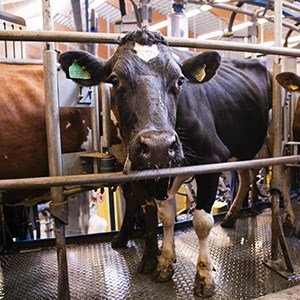The overall aim is to improve animal health and welfare through breeding and management in organic dairy milk production with special emphasis on udder and metabolic health. Focusing on measures feasible for breeding and management, we combine improved farm management with long term genetic improvements.
Specifically, the following main hypotheses are investigated:
- Breeding strategies for organic dairy production in Europe can be enhanced by taking into account characteristics of commercial and local/native breeds and their ability to adapt to local environments including grazing and low concentrate feeding. Using genomic selection and crossbreeding of local/native and commercial breeds are important aspects of future organic dairy cow breeding.
- Identification of risk factors for stress and udder infections and systematic use of drying off quarters with mild mastitis will contribute to efficient preventive and handling strategies, improving udder health and reducing medication in organic dairy herds without negative effects on animal welfare.
- Pasture based feeding strategies may lower metabolic disease and mastitis risks. This effect can be increased by utilizing information concerning individual cow activity.
This ERA-net project run 2015-2018 and have seven partners: Denmark - AU-AS, Poland – NRIAP, Germany - Uni Kassel, Lithuania – LUHS, Sweden – SLU, Austria – BOKU, Switzerland – FIBL.
The Department of Animal Breeding and Genetics at SLU are involved in three of the work packages of the project: WP1 – Health and production traits in local and commercial breeds. WP 2 – Identification of major farm types, WP 3 - Development of breeding strategies including crossbreeding and genomic information by simulation.
Project group:
Julie Clasen, Department of Animal Breeding and Genetics
Lotta Rydhmer, Department of Animal Breeding and Genetics
Erling Strandberg, Department of Animal Breeding and Genetics
Anna Wallenbeck, Department of Animal Breeding and Genetics
